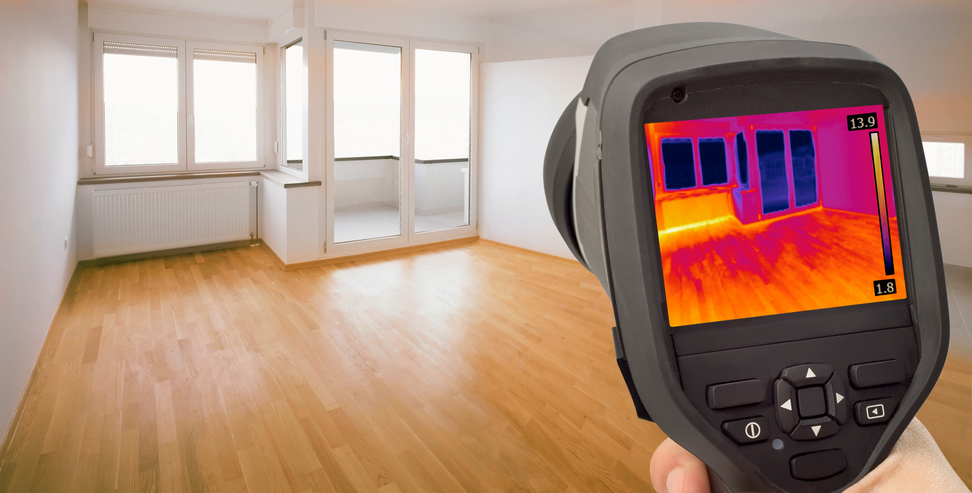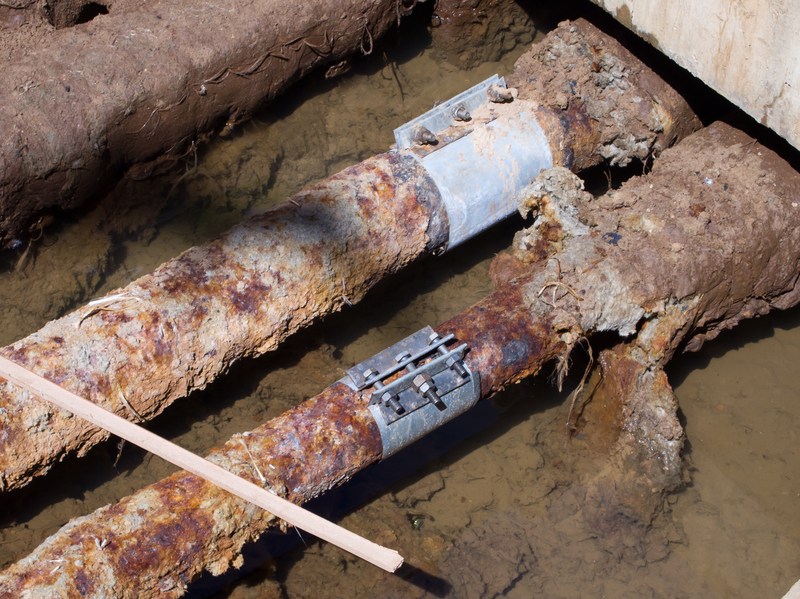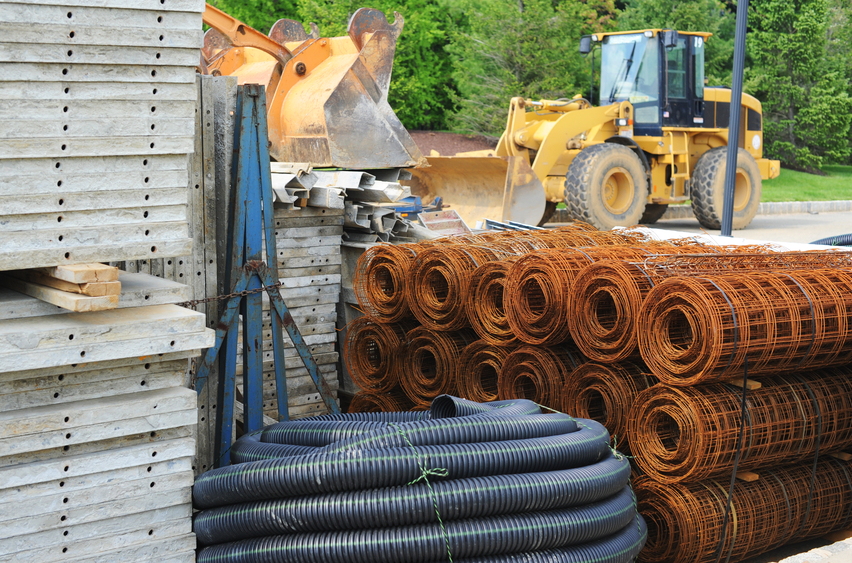Missouri Materials 30 PDH Discount Package 3
Courses in this Package
Home Insulation Basics (T03-002)
Basic Principles of Metallurgy and Metalworking (T04-009)
An Introduction to Cathodic Protection Principles (E05-006)
An Introduction to Cathodic Protection Inspection and Testing (E05-007)
Introduction to Welding and Non-Destructive Testing (NDT) (T06-005)
Lubricants and Hydraulic Fluids: Applications (T07-003)

This online engineering PDH course provides guidance on how insulation works, what different types of insulation are available, and how much insulation is generally required based on climatic conditions.
Heating and cooling account for 50% to 70% of the energy used in the average American home. Inadequate insulation and air leakage are leading causes of energy waste in most homes. Proper insulation:
- saves money and our nation's limited energy resources {C}
- makes your house more comfortable by helping to maintain a uniform temperature throughout the house
- makes walls, ceilings, and floors warmer in the winter and cooler in the summer
The amount of energy a homeowner can conserve will depend on several factors:
- local climate
- size, shape, and construction of the house
- living habits of the home occupants
- type and efficiency of the heating and cooling systems
- type of fuel being used
Once the energy savings have paid for the installation cost, energy conserved is money saved, and saving energy will be even more important as utility rates go up.
This 3 PDH online course is applicable to engineers, energy professionals and construction personnel who are interested in gaining a better understanding of insulation applications in a variety of settings and their corresponding benefits.
This PE continuing education course is intended to provide you with the following specific knowledge and skills:
- Understanding of how insulation works
- Learning about what kind of insulation is best
- Learning about how to insulate a new house versus adding insulation to an existing one
- Learning about air sealing, moisture control and ventilation
- Understanding the various insulation installation options and challenges
In this professional engineering CEU course, you need to review the course document titled “Insulation Basics” prepared by the Department of Energy, Publication No. DOE/CE-0180 (2008).
Upon successful completion of the quiz, print your Certificate of Completion instantly. (Note: if you are paying by check or money order, you will be able to print it after we receive your payment.) For your convenience, we will also email it to you. Please note that you can log in to your account at any time to access and print your Certificate of Completion.

This online engineering PDH course provides an overview of the topics of metallurgy and metalworking.The course discusses the parameters, properties, metalworking processes, and identification methods of metal alloys.
Metallurgy is a domain of materials science and engineering that studies the physical and chemical behavior of metallic elements, their inter-metallic compounds, and their mixtures, known as alloys. Metallurgy is also the technology of metals: the way in which science is applied to the production and industrialization of metals, and the engineering of metal components for use in products for consumers and manufacturers.
This 4 PDH course is intended for material, mechanical, civil, and chemical engineers who are interested in exploring the basic principles of metallurgy and metalworking principles.
This PE continuing education course is intended to provide you with the following specific knowledge and skills:
- Learning about the history of metallurgy
- Learning about metal properties and alloys
- Familiarizing with mechanical properties of metals
- Learning about strength in metals
- Familiarizing with corrosion resistance
- Familiarizing with types of iron, steel, as well as nonferrous metals and alloys
- Understanding the basics of metalworking processes
- Learning about metal identification and testing methods
Upon successful completion of the quiz, print your Certificate of Completion instantly. (Note: if you are paying by check or money order, you will be able to print it after we receive your payment.) For your convenience, we will also email it to you. Please note that you can log in to your account at any time to access and print your Certificate of Completion.

This online engineering PDH course will provide you with an introduction to the principles of cathodic protection for underground and underwater structures. You will be introduced to the physics and chemistry of the corrosion process and how to mitigate the corrosion using cathodic protection techniques.
Understanding the principles of cathodic protection systems is based upon understanding the nature of the corrosion process. The corrosion of metals is an electrochemical process. That is, it is an electrical circuit where the exchange of electrons (electricity) is conducted by chemical reactions in part of the circuit. These chemical reactions occur at the surface of the metal exposed to the electrolyte.
Cathodic protection is the prevention of corrosion by making a metal, which would ordinarily behave like an anode and corrode, behave like a cathode and be free from corrosive attack. Essentially, cathodic protection is predetermining the anode in the corrosion cell, or making a large corrosion cell to overcome the other smaller corrosion cells.
This 5 PDH online course is intended for civil engineers, structural engineers, mechanical engineers and other design and construction professionals seeking an introduction to the principles of cathodic protection.
This PE continuing education course is intended to provide you with the following specific knowledge and skills:
-
Understanding the chemistry and physics behind the corrosion process
-
Learning about the different types of corrosion activity
-
Knowing the corrosion rates for different metals
-
Understanding the importance of the galvanic series of metals
-
Understanding the fundamentals of the sacrificial anode approach to corrosion protection
-
Learning about the basics of the impressed current process
In this professional engineering CEU course, you need to review the course document titled, "An Introduction to Cathodic Protection Principles".
Upon successful completion of the quiz, print your Certificate of Completion instantly. (Note: if you are paying by check or money order, you will be able to print it after we receive your payment.) For your convenience, we will also email it to you. Please note that you can log in to your account at any time to access and print your Certificate of Completion.

This online engineering PDH course provides an introduction to cathodic protection inspection and testing techniques for galvanic and impressed current systems. It includes criteria and inspection actions that, when used either separately or in combination, will indicate whether adequate cathodic protection of a metallic piping system has been achieved.
The effectiveness of cathodic protection or other corrosion control measures can be affirmed by visual observation, measurements of pipe wall thickness, or by use of internal inspection devices. Because such methods sometimes are not practical, meeting any criterion or combination of criteria in this chapter is evidence that adequate cathodic protection has been achieved. When excavations are made for any purpose, the pipe should be inspected for evidence of corrosion and/or coating condition. Apply sound engineering practices to determine the methods and frequency of testing required to satisfy these criteria.
The criteria in this discussion have been developed through laboratory experiments and/or verified by evaluating data obtained from successfully operated cathodic protection systems. Situations may exist where a single criterion for evaluating the effectiveness of cathodic protection may not be satisfactory for all conditions. Often a combination of criteria is needed for a single structure.
This 5 PDH online course is intended for civil engineers, structural engineers, mechanical engineers, electrical engineers and other design and construction professionals seeking an introduction to the principles of inspection and testing of cathodic protection systems.
This PE continuing education course is intended to provide you with the following specific knowledge and skills:
-
Learning about the National Association of Corrosion Engineers (NACE) standards
-
Understanding the importance of negative cathode potential
-
Learning how to inspect and test bare or ineffectively coated pipelines where long line corrosion activity is of a primary concern
-
Understanding how aluminum may suffer from corrosion under high pH conditions
-
Learning the fundamentals of inline inspection of pipes
-
Learning about stray currents and stray electrical gradients
-
Learning how to test for a short between two structures with cathodic protection on one structure
-
Knowing when you should test for a short between two structures without cathodic protection on either structure
-
Understanding the current requirement testing procedures
-
Learning about the use of temporary anodes
-
Learning about anode bed inspection and testing for impressed current cathodic protection systems
In this professional engineering CEU course, you need to review the course document titled, "An Introduction to Cathodic Protection Inspection and Testing".
Upon successful completion of the quiz, print your Certificate of Completion instantly. (Note: if you are paying by check or money order, you will be able to print it after we receive your payment.) For your convenience, we will also email it to you. Please note that you can log in to your account at any time to access and print your Certificate of Completion.

This online engineering PDH course provides basic information to understand the basic principles of various testing methods, as well as details of typical applications, principles, advantages, and limitations in order to evaluate welds.
Welding is one of the most common type of joining method used in the industry. Welded components are subjected to thermal stress, which results in microscopic cracking, deformation, and hardening of the metal. Depending on the materials and the welding process, the consequences of heat input on the material surrounding the weld can compromise the material’s integrity or suitability for service.
The welded materials are subjected to destructive and/or non-destructive tests to ascertain these to be fit for purpose. Destructive testing has the drawback of destroying the test object in the process. Non-destructive tests on the other hand permit evaluation of the material or component without destroying it. To appropriately apply these inspection procedures, a certain level of skill is required. These tests are not simply for screening out bad products; they are also for assuring that what appears to be good is actually good.
This 6 PDH online course is applicable to mechanical engineers who are interested in improving their knowledge about the use of non-destructive and destructive testing methods to evaluate welds.
This PE continuing education course is intended to provide you with the following specific knowledge and skills:
- Familiarizing with the characteristics and properties of materials and steel alloys
- Familiarizing with the basic types of weld joints and their symbols
- Gaining a general overview on the commonly used welding processes
- Learning about the causes of welding defects and discontinuities along with the acceptance criteria of weld defects
- Understanding common mechanical destructive tests for establishing tensile strength, hardness, toughness, and impact resistance
- Exploring common non-destructive testing (NDT) methods including visual testing, penetrant testing, magnetic particle testing, eddy current testing, radiographic testing, and ultrasonic testing
- Learning about the types of equipment used for each non-destructive and destructive examination
- Understanding the advantages and limitations of various test methods
Upon successful completion of the quiz, print your Certificate of Completion instantly. (Note: if you are paying by check or money order, you will be able to print it after we receive your payment.) For your convenience, we will also email it to you. Please note that you can log in to your account at any time to access and print your Certificate of Completion.

This engineering online PDH course covers the lubricant specifications and selection, requirements of lubricants for different types of equipment as well as the operation and maintenance considerations.
This course is intended to be a practical guide to lubrication with enough technical detail to allow personnel to recognize and easily discern differences in performance properties specified in manufacturers' product literature so that the proper lubricant for a particular application is selected. In addition, this course discusses the considerations required to adequately maintain the integrity of the lubricants and ensure their effective performance.
This 7 PDH online course is applicable to engineers, design and construction personnel, and other technical professionals who are interested in gaining a better understanding of lubricants and hydraulic fluids.
This PE continuing education course is intended to provide you with the following specific knowledge and skills:
- Learning about the basic types of gears and the lubricants they require
- Understanding the basic characteristics of bearing lubrication and their application
- Familiarizing with the lubrication of miscellaneous applications including but not limited to stormwater pumps and motors, couplings, hoists and cranes, wire ropes, and chains
- Familiarizing with the operation, maintenance, and selection considerations of lubricants
Upon successful completion of the quiz, print your Certificate of Completion instantly. (Note: if you are paying by check or money order, you will be able to print it after we receive your payment.) For your convenience, we will also email it to you. Please note that you can log in to your account at any time to access and print your Certificate of Completion.